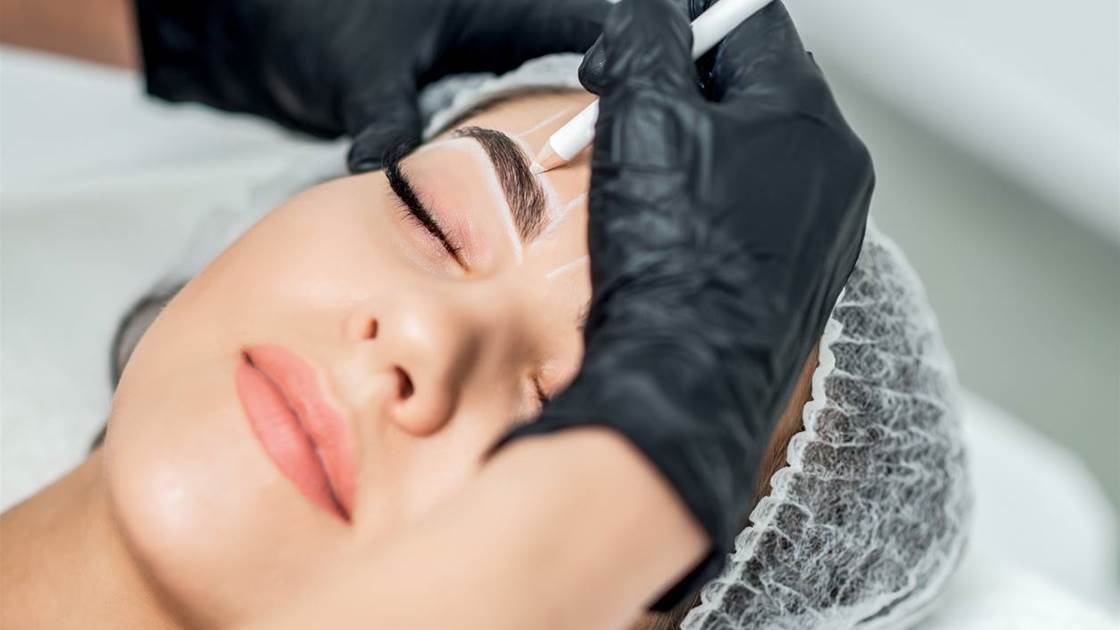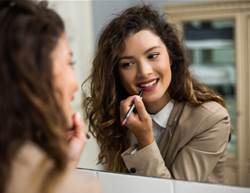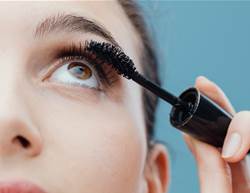So long pencil-thin 90s brows-bushy brows are back, thanks to celebs like Cara Delevingne, Emma Watson, Sofia Vergara, and Lily Collins. While those who hate plucking can rejoice in the tweezer-free trend, there’s one tiny problem: Growing out your brows can be a total pain, especially if you’re not naturally blessed with the fuller look.
For most people, simply using an eyebrow pencil to fill in those sparse areas can do the trick and create the illusion of thick eyebrows. But what if you don’t want to spend the extra time getting ready in the morning? Or you simply want thick brows without the worry of them fading throughout the day-say, during your workout or at the beach?
That’s where microblading comes in: a semi-permanent makeup treatment that places special pigments under the top layer of your skin, explains brow artist and trainer Renee Lee. The result is tiny hair-like strokes that create natural and fuller-looking eyebrows.
Sounds great, right? But there’s a catch: Microblading comes with some healing time and a few risks. Here’s everything you should know before you try it for yourself.
What is microblading, exactly?
Think of microblading as a tattoo, but not as deep. The brow artist uses a pen-like tool outfitted with seven to 16 (or more) micro-needles in various configurations, says Lee. “Microneedles are so tiny that they can’t be seen in detail by the naked eye,” she explains, so they can realistically mimic brow hairs by creating thin strokes. The artist may also use a shading technique that involves “plucking” the skin to deposit the ink manually.
How much does microblading cost?
The cost varies depending on your location and the experience of the artist, but can often go as high as $1,000 for the first treatment.
Does microblading hurt?
Your first microblading treatment will take the longest. Initial appointments can last 1.5 to 2 hours depending on the skill level of the artist, says Lee. This includes paperwork, consultation, and developing a plan for the brow shape you’d like to go for. You’ll have a numbing agent (like lidocaine) applied to the brow area and then the procedure itself will take 30 to 45 minutes, she says.
If you’re interested in microblading, here’s the best news: “It absolutely does not hurt,” says Lee. (Big sigh of relief!) “We’ve mastered addressing the pain during the procedure and strive to make the entire process as comfortable and relaxing as possible,” she says. This is all the more reason to go to a trained, skilled eyebrow artist-someone who has a lot of experience in the treatment or makes this the mainstay of their work.
However, you may notice some discomfort after the procedure as the area heals. Popping an over-the-counter pain reliever will help.
How long does microblading take to heal?
You’ll often have a 2-week aftercare plan, but it varies, says Lee. The day after your appointment, you may see the eyebrow area turn very dark, then it will soften and peel (either lightly like dandruff or patchy in chunks). Finally, the colour will look like it disappears and then return, she explains.
“We advise clients to be patient for one full month before being fully healed. At that point, the true colour of the brows is revealed,” she says. After that, you may go back in for a touch-up, if needed.
You’ll want to keep the eyebrow area clear of oil build-up and moist for best healing. “This usually means people with drier skin need to stay on top of moisturising and avoiding over-exposure to water, and those with oilier skin need to keep the area clean of excess oil build-up,” says Lee. Your brow artist can recommend products depending on your skin type.
How long does microblading last?
It may be “permanent makeup” but it doesn’t last forever, and the colour will fade. While microblading can last up to two years, the results differ depending on the person and their reaction to the ink. Typically, people are advised to touch-up the colour and shape every six months, but Lee says some clients come in at three to eight months post-treatment.
“I always recommend staying ahead of the fading curve, meaning coming in right before brows start to fade,” she says. Since everybody reacts differently to microblading, the first session is more of a test to give the artist insight about how your brows respond and what tweaks need to be made next time.
Can anyone try microblading?
People with healthy skin are good candidates for microblading, says Lee, and that goes a long way in tipping the scales in your favour for a safe treatment and satisfying results.
“Since the procedure requires traumatising the skin, if the skin is unhealthy, the outcome will be unpredictable and most likely not ideal,” adds Lee. That means people with bleeding disorders, active inflammatory conditions near the eyebrows like eczema or shingles, allergies to ink, taking prescription acne medications like Accutane, using products with anti-aging ingredients like retinol, and taking blood thinners or supplements may not be good candidates for microblading.
That’s a long list-and still, there are more medical conditions (like thyroid disorders and diabetes) and lifestyle factors (recent waxing or chemical peels) that can compromise skin healing. Always talk to your doctor before seeing a microblading artist; when you go in for treatment, be honest about your current medical history.
Is microblading safe?
Even if your skin is healthy, you need to do your due diligence to find a skilled and reliable eyebrow artist. Earlier this year, a woman spent three days in the hospital because of complications from microblading, Prevention reported. A few days after her appointment, her brow area grew red, painful, and swollen. She was eventually taken the hospital for antibiotics and steroids.
Microblading procedures “are not regulated for safety, the inks aren’t tested, and I’ve seen a lot of complications, like infection, allergy, permanent scarring, and poor aesthetic outcomes,” says dermatologist Jennifer MacGregor. That may include unnatural looking brows or “block” brows (typically characterised by that harsh, square shape).
Even though Dr MacGregor has gone through a microblading procedure herself, she explains that a dermatologist will never say a cosmetic tattoo is 100 percent safe, even if you see a qualified artist. No matter where you go, you need to watch for signs of infection. Minor redness (less than a centimetre around the treated area), itching, and minor crusting are normal, says Dr MacGregor. Pain, significant swelling, oozing, or pus is not.









